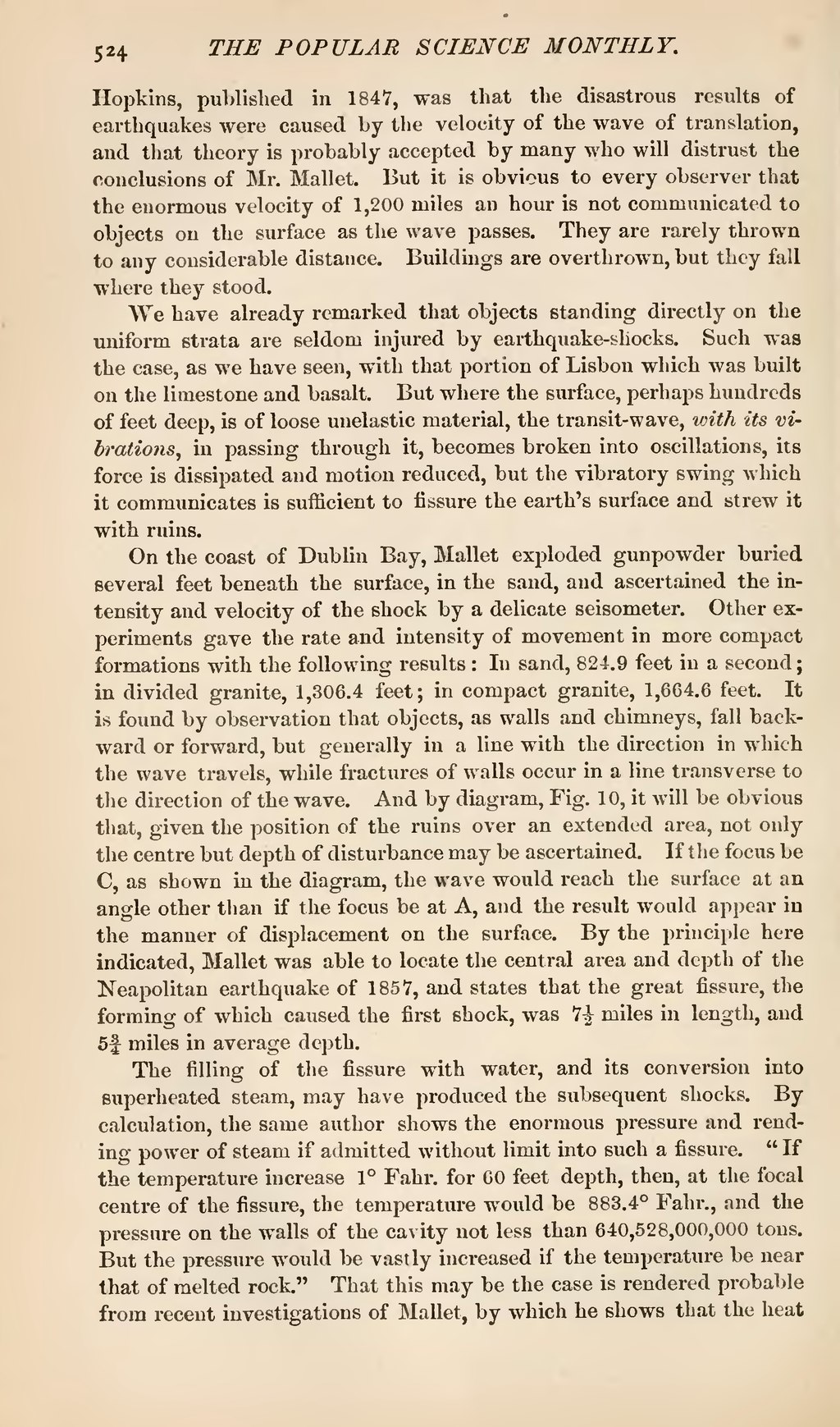Hopkins, published in 1847, was that the disastrous results of earthquakes were caused by the velocity of the wave of translation, and that theory is probably accepted by many who will distrust the conclusions of Mr. Mallet. But it is obvious to every observer that the enormous velocity of 1,200 miles an hour is not communicated to objects on the surface as the wave passes. They are rarely thrown to any considerable distance. Buildings are overthrown, but they fall where they stood.
We have already remarked that objects standing directly on the uniform strata are seldom injured by earthquake-shocks. Such was the case, as we have seen, with that portion of Lisbon which was built on the limestone and basalt. But where the surface, perhaps hundreds of feet deep, is of loose unelastic material, the transit-wave, with its vibrations, in passing through it, becomes broken into oscillations, its force is dissipated and motion reduced, but the vibratory swing which it communicates is sufficient to fissure the earth's surface and strew it with ruins.
On the coast of Dublin Bay, Mallet exploded gunpowder buried several feet beneath the surface, in the sand, and ascertained the intensity and velocity of the shock by a delicate seisometer. Other experiments gave the rate and intensity of movement in more compact formations with the following results: In sand, 824.9 feet in a second; in divided granite, 1,306.4 feet; in compact granite, 1,664.6 feet. It is found by observation that objects, as walls and chimneys, fall backward or forward, but generally in a line with the direction in which the wave travels, while fractures of walls occur in a line transverse to the direction of the wave. And by diagram, Fig. 10, it will be obvious that, given the position of the ruins over an extended area, not only the centre but depth of disturbance may be ascertained. If the focus be C, as shown in the diagram, the wave would reach the surface at an angle other than if the focus be at A, and the result would appear in the manner of displacement on the surface. By the principle here indicated, Mallet was able to locate the central area and depth of the Neapolitan earthquake of 1857, and states that the great fissure, the forming of which caused the first shock, was 7½ miles in length, and 5¾ miles in average depth.
The filling of the fissure with water, and its conversion into superheated steam, may have produced the subsequent shocks. By calculation, the same author shows the enormous pressure and rending power of steam if admitted without limit into such a fissure. "If the temperature increase 1° Fahr. for 60 feet depth, then, at the focal centre of the fissure, the temperature would be 883.4° Fahr., and the pressure on the walls of the cavity not less than 640,528,000,000 tons. But the pressure would be vastly increased if the temperature be near that of melted rock." That this may be the case is rendered probable from recent investigations of Mallet, by which he shows that the heat
